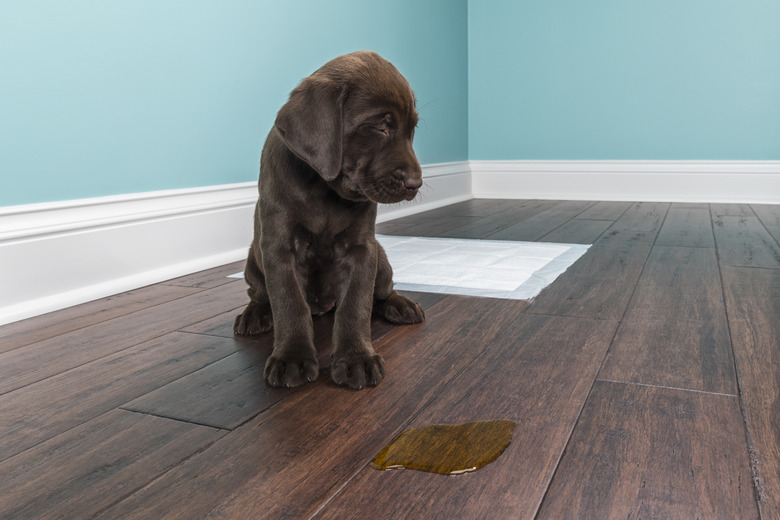How To Remove Pet Stains On Hardwood Floors
Hardwood floors add warmth and grace to your home, but they can also act as sponges for spills, as well as for pet accidents. If left unattended, urine damage to hardwood floors can leave a permanent odor as well a visible stain. Cleaning hardwood floors takes a bit of finesse because it is very easy to ruin the finish and even damage the floor. In the case of very old stains that have never been treated, you may have to consider either sanding and refinishing or replacing the floor, but newer stains can usually be removed if you are willing to spend the time and expend the effort.
Facts About Hardwood Floors
Facts About Hardwood Floors
Wooden floors are an excellent choice for anyone with dust allergies and are fairly easy to maintain, but even waxed or sealed wooden floors are porous. Liquid stains, such as spills and pet accidents, must be cleaned up immediately to ensure that they do not sink into the wood.
Why Pet Stains on Hardwood Floors are Such a Challenge
Why Pet Stains on Hardwood Floors are Such a Challenge
Pet urine from both cats and dogs contains certain enzymes that help pets mark their territory. When these enzymes are reawakened by a liquid, they release powerful odors that can be extremely unpleasant. Once these enzymes sink into the wood, they can be very difficult to remove without damaging the finish or even the wood itself. Removing pet stains from hardwood floors with bleach, for example, can dissolve the finish and lighten the wood.
Homemade Pet Urine Stain Removers
Homemade Pet Urine Stain Removers
Although dog and cat stains are similar, they are not exactly the same and sometimes require being treated differently. To remove dog urine from a hardwood floor, put about 1 cup water into a clean spray bottle. Add 1/3 cup distilled white vinegar or so and carefully add 1/4 cup baking soda. This may fizz a bit, so do it over the sink. Add around 1/4 cup of mild dish soap. The proportions don't have to be exact. Swirl the bottle to mix the contents, screw the spray assembly onto the bottle and apply the mixture to a small area of the floor that is not generally visible, such as a corner, under a bed or even under an area rug. Rub it in with a clean, damp, lint-free cloth and let it sit for 15 minutes. Wipe the mixture away with a fresh, damp cloth. If the wood has not discolored, repeat the process on the actual stain.
Cat stains, to absolutely no one's surprise, can be a whole lot more stubborn than dog stains. You can try the above method to remove them, but if it does not work, you may have to try something stronger. Choose a small, out of the way place for a test run. Pour a bit of hydrogen peroxide on top the stain. Soak a clean, lint-free cloth in more hydrogen peroxide and place it on top of the newly-wet stain. Cover the area with plastic cling wrap or waxed paper and weigh it down with something heavy, such as a thick, hardcover book or a stack of large fashion magazines. Let it sit for at least eight hours, then check the spot. If the treatment has not discolored the wood, try it on the actual stain.
Commercial Pet Urine Stain Removers
Commercial Pet Urine Stain Removers
Commercial pet stain removers are called enzymatic cleansers because they are specifically formulated to break down the enzymes that make pet pee so stinky. These can be found in pet stores, home improvement stores, big box stores, supermarkets and online. As always, do a spot test first and be sure to follow the manufacturer's instructions for use. If you have caught a pet accident immediately, cleaning the mess right away and then rubbing the spot with a clean cloth dampened with baby detergent can also work because diaper soap is also designed to break down biological stains.
